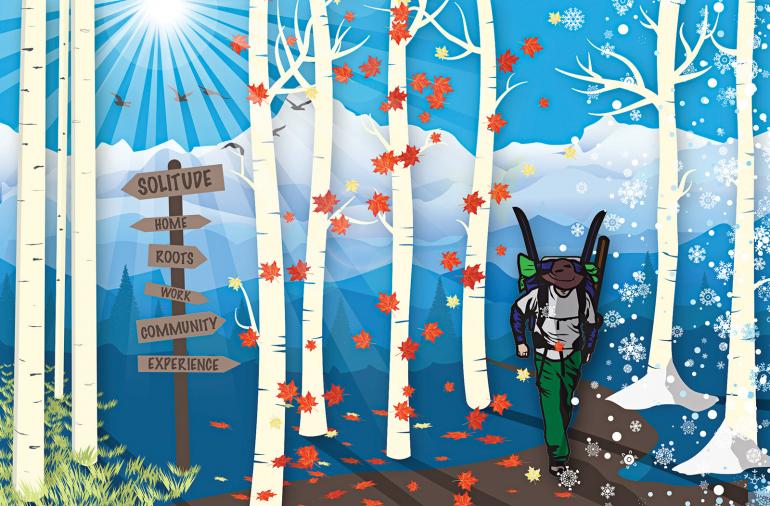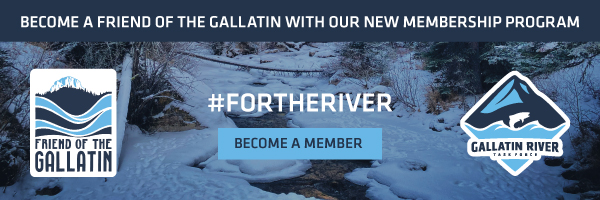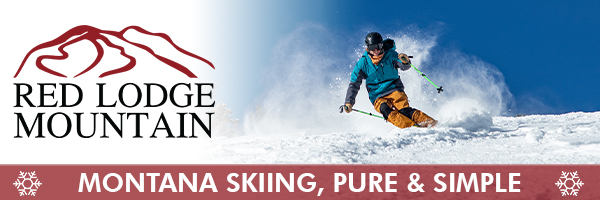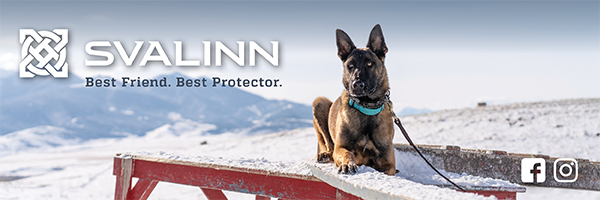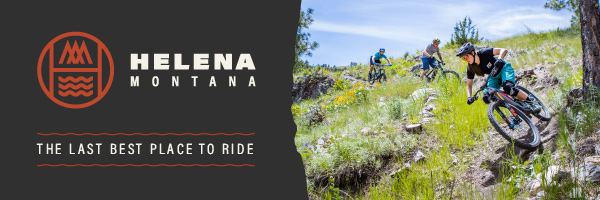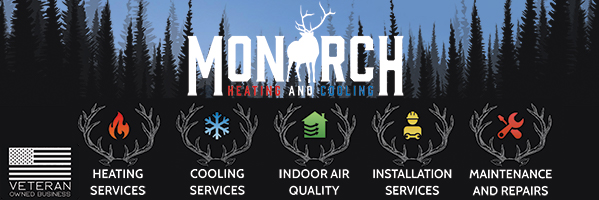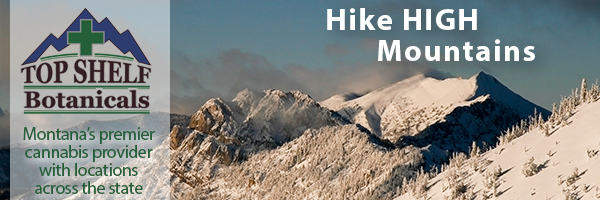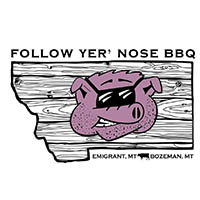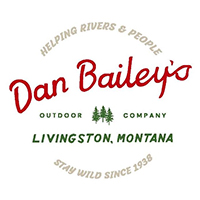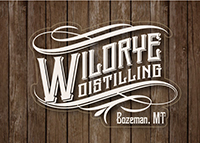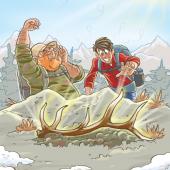New Roots
Thoughts on belonging, from the world of transplants.
Nine months gone in a blink. After a summer spent ranch-handing in Colorado and an autumn harvesting apples in Norway, I am settling for a third winter into the busy little valley nestled between the Bridger and Gallatin ranges. For many 20-somethings like myself, seasonal work has become the name of the game for those seeking travel, excitement, and newness in the day-to-day. Choosing to call Bozeman home for the snow season is an especially easy choice for a person who has spent much of his life with some version of the narrow, neon, carbon-plastic contraptions strapped to the bottoms of his feet—it feels good to be back on skis. It feels good to be reminded, also, of the experience and camaraderie they can offer when part of the daily routine.
Although much of the previous three years involved changing homes in clumps of months that can be counted on one hand, Bozeman’s skiing scene remains a uniquely intriguing community—largely due to its abundance of transplants relative to born-and-raised locals. The overwhelming majority of my coworkers and I have found our way here from one place or another chasing the cold smoke. Freshly arrived, we tend to recognize and gravitate toward one another—phones filling up with new numbers, area codes indicating the relative strangeness of our native homelands. We have built a ramshackle neophyte community, all of us together here in this new space. We call ourselves dirtbags, students, or lifties, but the common label that holds most all of us together is this: we are transplants.
Faced with a changing reality, it can be difficult for us transplants to enter—and understand with any real depth—a place like the Gallatin Valley.
It’s a term I had not heard with much frequency outside of the world of gardening before coming West. But “transplant” has become so common here as to border on the cliché. To encounter a native Bozemanite now, at least in many of my seasonal circles, feels nearly as unusual as meeting a tree that has decided of its own accord to pick up roots and move shop—and it is roots we’re talking here.
It should come as no surprise in our agrarian society that we link roots with home both literally and metaphorically. From the small family-farming operations of old, right on up to the more recent fads of haybale beds and micro-gardening that have swept our suburban neighborhoods, direct interaction with the land that surrounds and supports us is grounding, gratifying, and powerful. And while most of us seasonal workers are not here long enough to put down physical roots in the summer months, we have found other ways of anchoring ourselves: late evenings spent at many breweries around town, each sporting some combination of locally-named beers; early mornings on the skin trail or classic track, skis shuffling along to the hum of conversation; quiet nights spent in mummy bags at the bottom of wind-pits, looking up into the night sky’s faded blue banner through ice-tinged eyes.
New as we are, our roots are learning where to look for the specificities of place. Numerous as we are, we compose a veritable forest descending quietly on the corduroy—rag-tag, well-layered, and motley.
Drawn to the predicament of belonging, of what it means to call a place home, I found myself listening carefully to the thoughts and words of those who have been navigating this dance of movement and community for longer than I.
It is unusual to talk to someone who is a native of the Bozeman area for long without hearing about just how much the town and valley have changed. The sprawling acres of new, rustic-style flats feel like a far cry from the unpaved main roads conjured up in memories that are not yet so far gone. Faced with this changing reality, it can be difficult for us transplants to enter—and understand with any real depth—a place like the Gallatin Valley. Working, living, and then leaving with our fellow part-timers, life centers regularly in the echo-chambers of strangeness—of roots relearning everything from weather patterns to coffee shops.
Drawn to this predicament of belonging, of what it means to call a place home, I found myself listening carefully to the thoughts and words of those who have been navigating this dance of movement and community for longer than I.
From a coworker over drags of matcha: I have to keep a sort of personal space that’s separate from geography—something no amount of moving will ever be able to take away from me.
From a friend who guides canoe trips to the North each summer and comes back to the mountains buzzing with a love for motion: It’s the water. It’s the way it talks to the paddle and the paddle talks to my hands. You learn to understand.
From a southern couple experiencing their first season of Rocky Mountain cold: I couldn’t be here on my own—not a chance. Without him—without someone to share it all with—it wouldn’t be worth staying.
Partnership; personal space; the language of place. Each a lived experience, each a different set of stories: life taking hold of what it has found to be stable.
It's challenging to say with any certainty what lasting impact my seasonal comings and goings will have on the essence of this place.
Whether we seek to make a place home for the quick spin of a season or to deepen roots already set down for the long haul, I have found in the world of transplants a unique blend of lessons, learnings, and philosophies on belonging—a traveling circus with a dash of something for everybody. As an individual who has wintered here only twice, it is challenging to say with any certainty what lasting impact my seasonal comings and goings will have on the essence of this place. As a member of a community that understands what it is to regularly be picking up and putting down, however, I can say with assurance that true belonging rarely, if ever, occurs as a simple byproduct of time. It is not something easily identified and coasted to—across a slope, across a community, or across a continent. Belonging, wherever we wish it, is something that must be tended and grown, and this only becomes possible when the soil—physical, emotional, and cultural—is healthy enough to support the roots that seek to tap it.
We are our own cultivators, capable of love for our surroundings, our communities, and ourselves. We each crave our own brand of connection—new roots reaching eagerly into the unknown.


